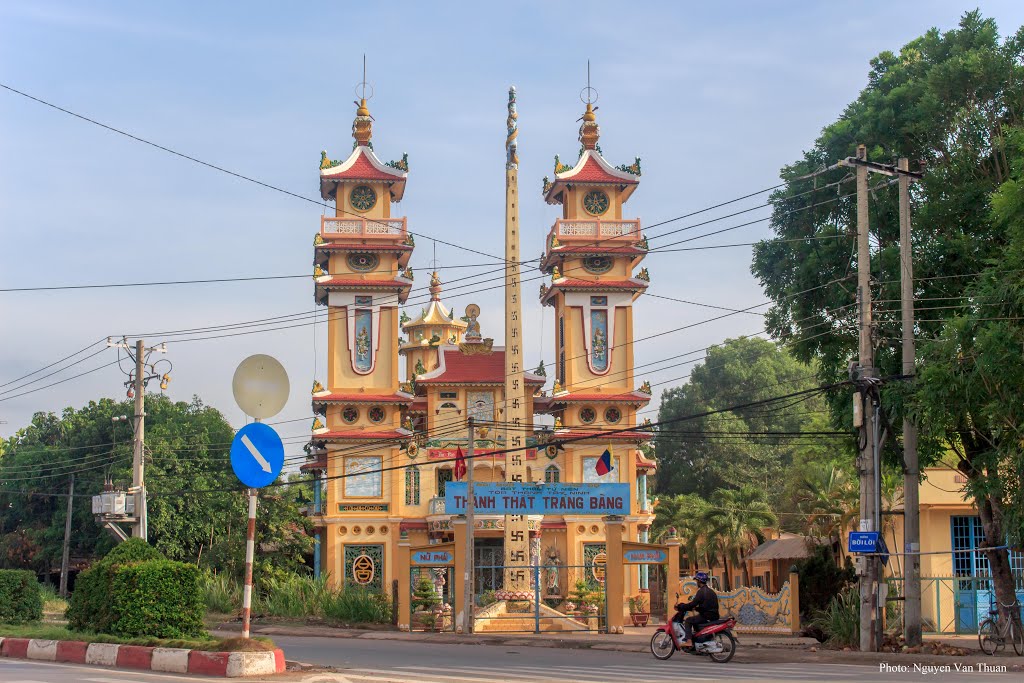5 Most Neglected War Sites in Saigon and How to Discover Them

Top things to do in Ho Chi Minh city
Explore now!
Saigon was a hotbed of activity throughout the Vietnam War. All of the photos featured in this article were taken in Saigon, 3 have won the Pulitzer prize for photography. The city and its surrounding areas are dotted with locations that are recognisable and important to the story of the war. However, the Vietnam war sites seem normal and are often neglected by travellers. If you want to understand more about the Vietnam war and relive the moments, you might need to book a local insider to show you where to go and explain the stories behind these incredible historic sites.
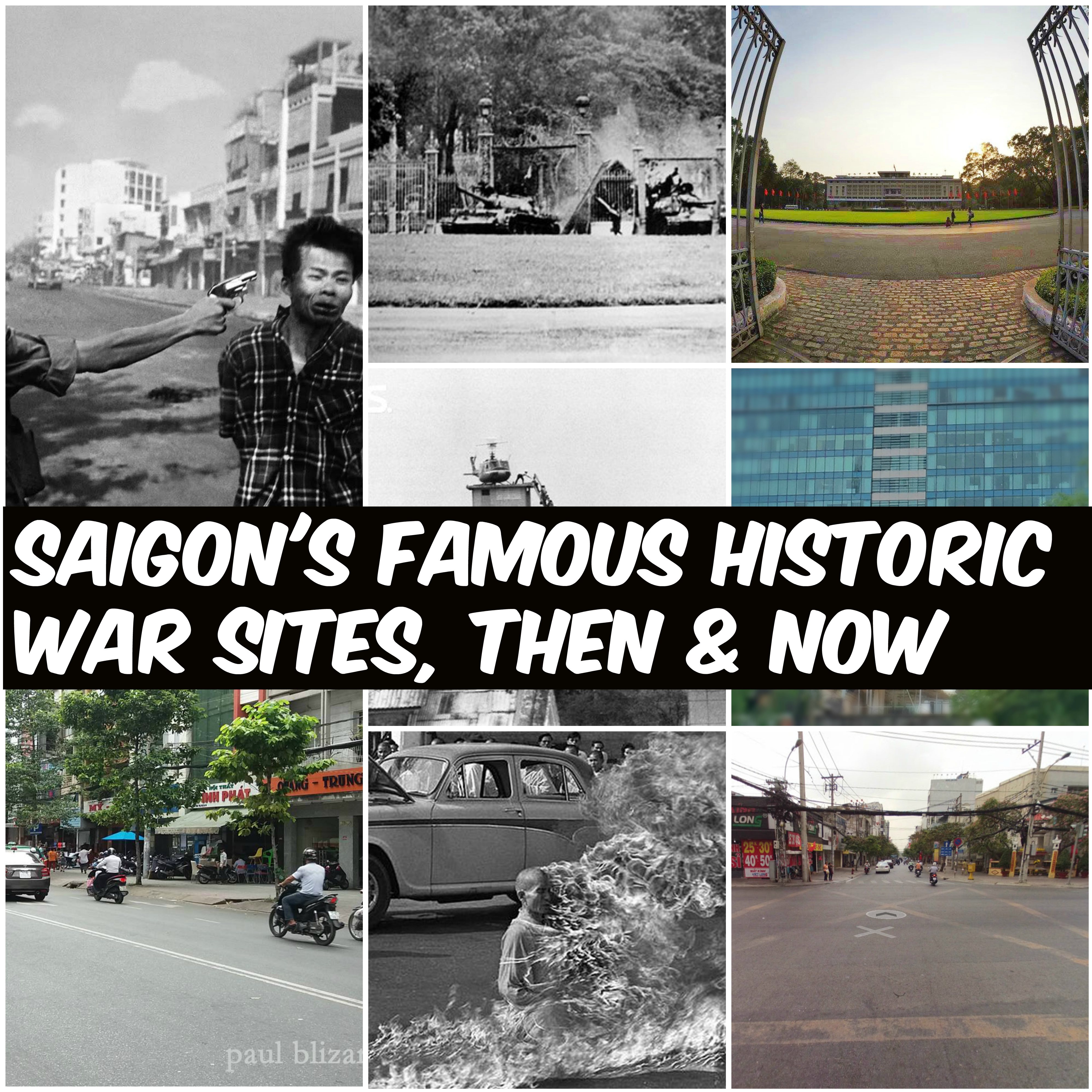
1. The Last Helicopter To Flee Saigon
This is an interesting spot because it signalled the last hours of the Vietnam war. The North Vietnamese Forces were bearing down on the city as its inhabitants made one last attempt to escape. This helicopter landed on a makeshift helipad at the American CIA building and tried to take as many as possible. This photo is truly amazing as it captures the sense of panic and desperation felt by those in Saigon. However, this helicopter , like many others, never returned to collect many of those who were left behind. This building is often missed by travellers but is an important landmark in one the wars most cataclysmic events-The fall of Saigon

What it looks like now?
Nowadays, the building in at 22 Ly Tu Trong street with the same architecture. It's a residential building, opposite from new Vincom shopping center and is easily missed because of this. Although you might not have access to the site, you can view it from closer distance from Secret Garden restaurant at 158 Pasteur street on the opposite building.
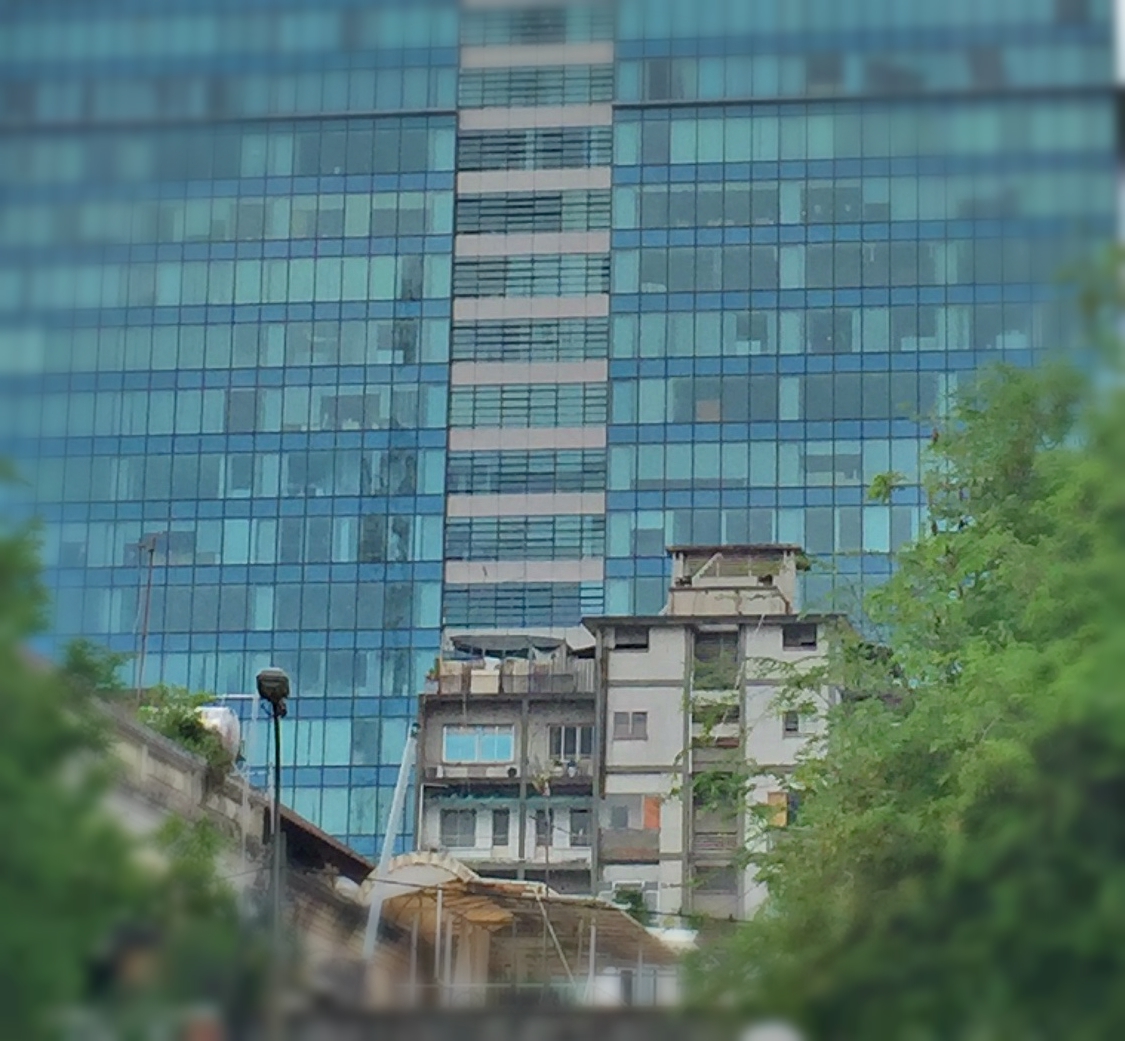
2. The Reunification Front Gate
The reunification palace was the former presidential palace of South Of Vietnam. When the Northern forces got into Saigon, the palace was their first target. The moment the tank crashed through the front gate carrying the North Vietnamese flag marked a turning point in Vietnam's history and changed the country's path forever.
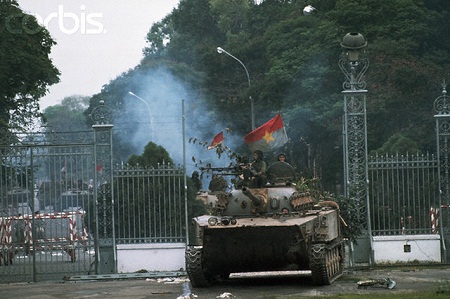
What it looks like now?
The reunification palace is still open for tourists nowadays and one of the most popular attractions. However, few pay attention to the front gate which has been captured in this iconic picture. The tank "390" captured in the photo is also displayed outside the palace which also functions as a museum now.

3. The 'Saigon Execution' photo
One of the most famous photos of the war. This Viet Cong soldier was captured and Eddie Adams captured this shot mere seconds before he was executed. The soldier in question was Nguyễn Văn Lém who was being condemned for war crimes. Adams won his Pulitzer Prize in 1968 and “Saigon Execution,” would be one of history’s most graphic, violent and enduring war photographs. The photo was taken on a random street in Saigon. Its location has only resurfaced recently.
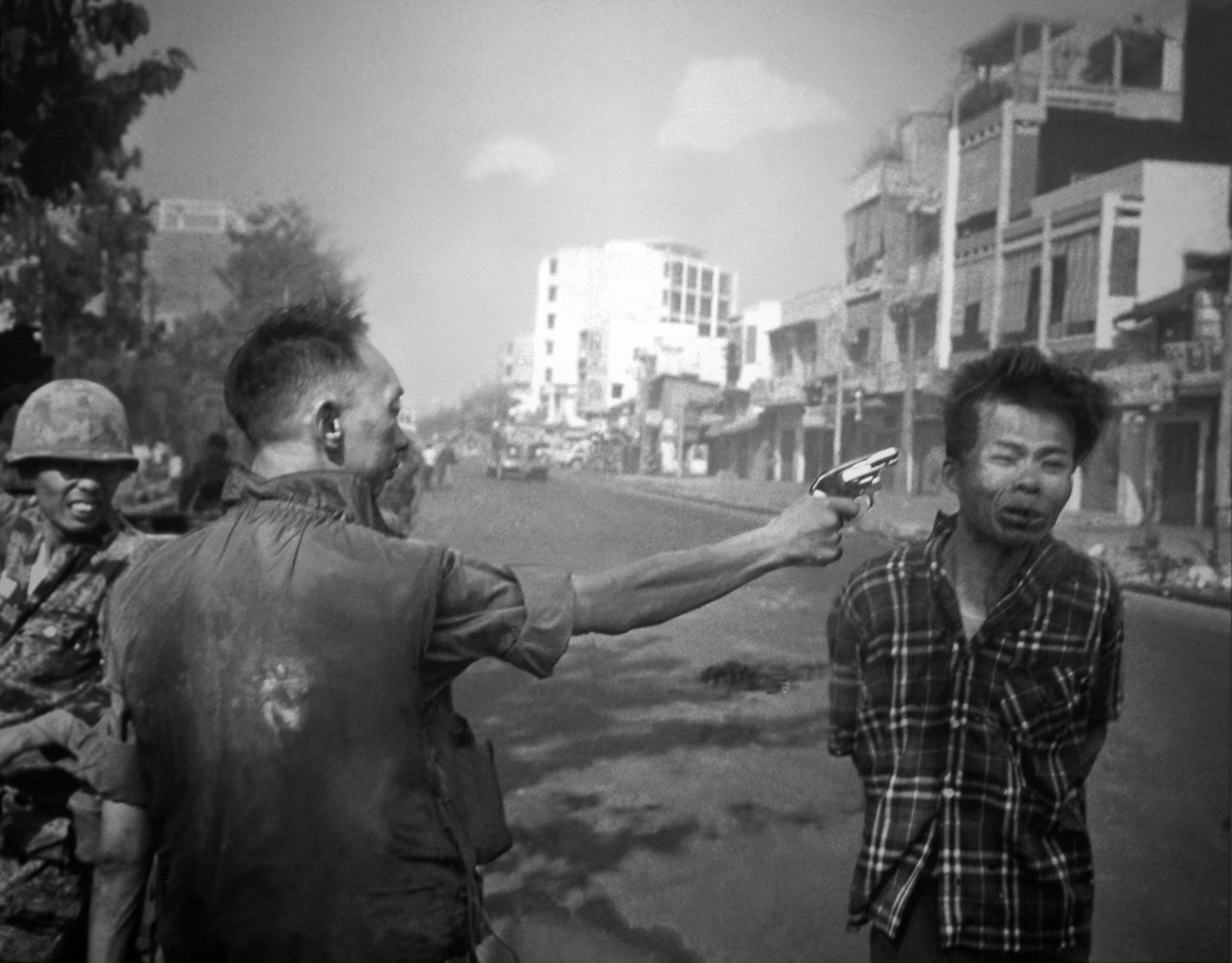
What it looks like now?
The location was an area of much conjecture. No one knew exactly where the event occurred. Recently, however almost after 50 years, an enthusiast expat in Saigon Paul Blizard spent his time to discover its exact location. If you want to see the spot where this truly brutal event occurred you can find it at 197 Ngo Gia Tu, District 10 HCMC.

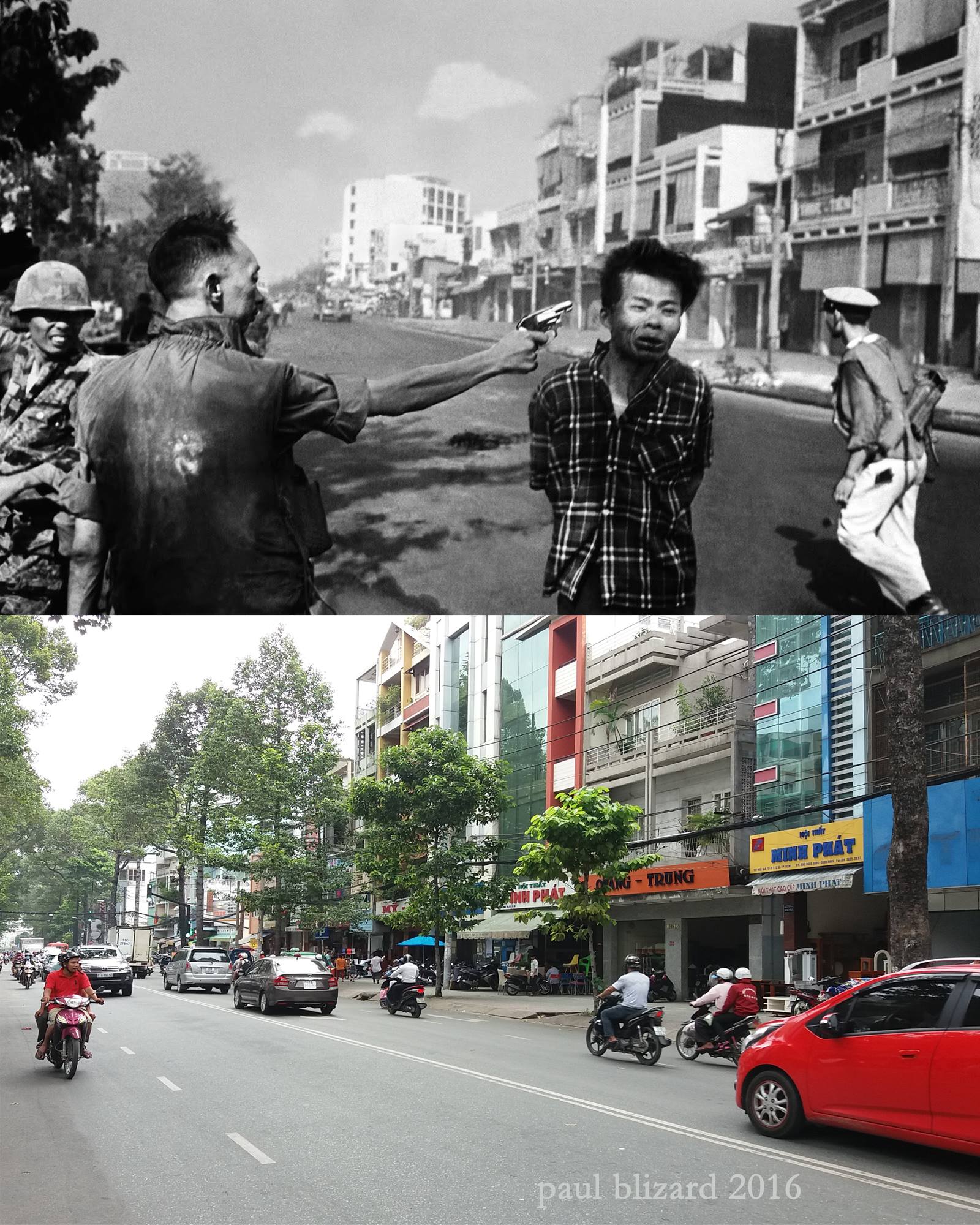
4. The Burning Monk
Thích Quảng Đức was a Buddhist monk who burned himself alive to protest the prosecution of his religion by the South Vietnamese government. The photo captured the attention of the world and brought increased pressure on the South Vietnamese government to find a conclusion to its Buddhist crisis. Indeed, mainstream western media widely displayed the photo, much to the shock of those who viewed it.The American president of the time, J.F Kennedy declared that "no news picture in history has generated so much emotion around the world as this one". Photographer Malcolm Browne won a Pulitzer prize for this amazing photograph in 1964.
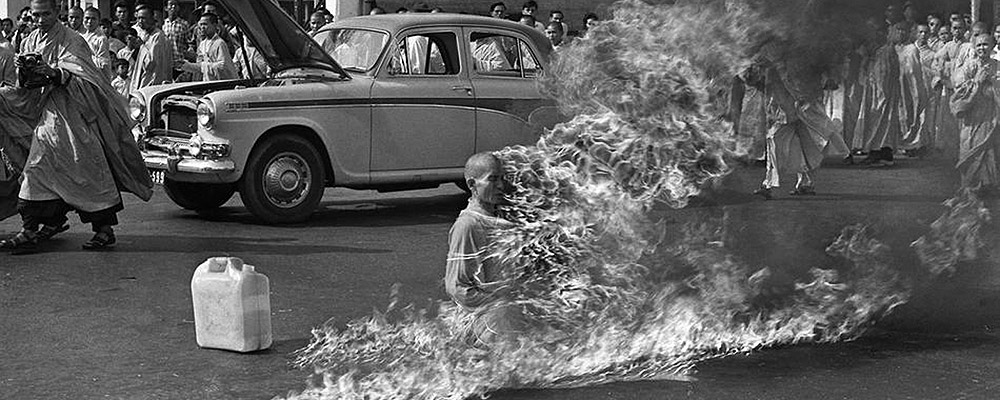
What it looks like now?
Browne snapped his iconic shot at the intersection between Nguyen Dinh Chieu and Cach Mang Thang 8. There is also a statue of Thich Quang Duc here, to mark an event which shocked the world.


5. The Napalm Girl
This is another photo which is instantly recognisable and highlights the intense brutality of the Vietnam war. This is a photo of Kim Phúc, a young girl whose village was destroyed in a napalm attack. Kim Phúc then fled the village with her family in an attempt to reach the safety of the South Vietnamese army. During their attempt to escape a South Vietnamese air pilot mistakenly attacked the group killing two members of Kim's family, badly burning Kim in the process.

The Napalm Girl village and Cu Chi Tunnels tour
Book now!
This image is without a doubt one of the war's most harrowing images of the war and many press editors were reluctant to publish it due to its graphic nature and nudity. However, the photo appeared in the New York Times and immediately captured the attention of the world. Nick Ut's work earned him a Pulitzer prize and was the World Press Photo of the year in 1973. For anyone who is further interested in the photo and Kim Phúc's life, a documentary on the subject by Denise Chong was released in 1999 called The Girl in the Photo.
What it looks like now?
This is the temple right next to the place where Nick Ut took the photo. The place is actually in Tay Ninh Province, 40km from south of Saigon next to a Cao Dai temple.
